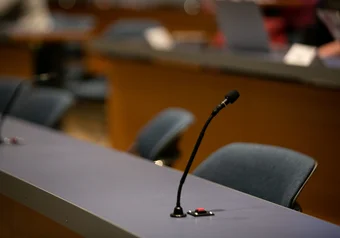Last night, the UBC Senate met to discuss the results of an external review of Senate operations, and received a report on the Student Experience of Instruction surveys.
Here’s what you might have missed.
External review
Senators received a report on a Senate operations review conducted last year. Information was gathered from a variety of sources including previous meeting minutes and Senate policies, as well as interviews and surveys with former and current Senate leaders and members.
The report highlighted several strengths of the Senate, such as the breadth of disciplines and demographics represented by members, and the high quality and thorough work conducted by its committees.
Areas of improvement were identified, including the need to provide new members with descriptions of their roles and responsibilities.
Senator Kareem Hassib noted that, with the end of term approaching, student Senators would be turning over, and a “robust orientation processes … would be incredibly useful.”
Senator Joanne Fox added that making expectations more explicit for roles, such as committee members and chairs, would improve efficacy.
The report also found that the Senate’s communication with the UBC community could be improved, with 29 per cent of review respondents characterizing Senate communication as “not at all effective.”
The Nominating Committee requested Senators send in their comments by June, with a full discussion of the results and their implementation scheduled for the October Senate meeting.
SEI's recieve low response rates
Senators also heard a presentation on the results of the most recent Student Experience of Instruction (SEI) surveys, from the 2021 and 2022 academic years. These are the instructor evaluations students are asked to complete at the end of a course.
Overall, the majority of responses to the six survey questions were favorable, however, low response rates raised concerns. For both years, less than half of the surveys completed met the university’s minimum response rate.
This trend was more pronounced in smaller courses, while most larger courses met the threshold. Providing in-class time to complete surveys improved response rates.
Hassib pointed out the end-of-term timeline provides “little incentive” for students to fill out evaluations.
“One of the ways we can improve the learning experience is by implementing … mid course feedback,” he said.“It provides more opportunity down the line for instructors to adapt their teaching style.”
Other issues were noted with the current system, including that surveys are used as part of the evaluation metrics for appointing tenure despite potential equity concerns.
Provost and Vice-President Academic Gage Averill said that a report on bias in student evaluations would be coming to the Senate in May, with the hope of better understanding these issues.
Share this article
First online



